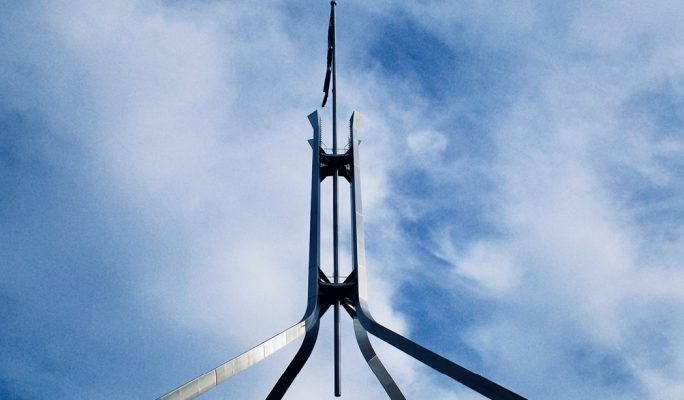Where are the businesses most reliant on JobKeeper (January)?


As Australian businesses face their first month without the JobKeeper scheme, we look at how the take-up of the scheme has changed since it started in April 2020 to the latest data release which covers payments to the end of January 2021. Our map covers the whole of Australia by local government area, and shows the proportion of businesses receiving the payments has varied significantly by region.
The JobKeeper Payment scheme was a temporary wage support measure for businesses significantly affected by COVID-19. The scheme had three phases, each with their own qualification requirements:
- Phase 1 ran from April to September 2020
- Phase 2 ran from October to December 2020
- Phase 3 from January to March 2021.
The latest data on the JobKeeper scheme reveals in January 2021, the first month of the third and final phase of JobKeeper, 15% of Australia’s 2.4 million businesses were receiving JobKeeper payments (372,000 businesses). The number of businesses qualifying for JobKeeper has been very stable throughout each individual phase, which means figures from January 2021 are likely to be a good indicator of the overall reliance on the scheme at the end of March 2021.
At the height of the scheme, 40% of all businesses in Australia were registered to receive JobKeeper payments.
Our map shows regional variability in the take up of JobKeeper by businesses, notably:
- Melbourne’s second wave of COVID-19 infections throughout the winter and spring months of 2020 led to a heavy reliance on JobKeeper in the city. Throughout July and August 2020, 46% of Melbourne businesses were receiving JobKeeper payments. In the last phase of the scheme, beginning in January 23% of the city’s businesses were still dependent on the subsidy.
- Similarly, Sydney’s December outbreak also seems to have had an impact on the city’s reliance on JobKeeper, albeit not to the same extent as in Melbourne.
Taylor Fry Principal Alan Greenfield says, “The outbreaks and resulting restrictions incurred in Melbourne and Sydney have had a measurable impact on the demand for JobKeeper in those two cities. In the last phase of the scheme, 23% and 17% of businesses were on JobKeeper in Greater Melbourne and Greater Sydney respectively. This is vastly different to 13%, 13% and 11% for Brisbane, Adelaide and Perth, who have not experienced significant outbreaks or lockdowns.”
Outside Australia’s capital cities, demand for JobKeeper was high during the first six months of the scheme, but businesses in regional areas have since been less reliant on the subsidy than those in capital cities.
“The lower reliance on JobKeeper payments in regional areas is partly due to the mix of businesses in those areas, fewer restrictions on movement and smaller rate of change in consumer behaviour compared to cities. One exception is destination tourism areas like Byron Bay and Port Douglas where JobKeeper reliance was still relatively high towards the end of the scheme,” says Greenfield.
About our map
We’ve used the latest data (JobKeeper processed applications between April 2020 and January 2021) from the Treasury and the Australian Bureau of Statistics to estimate and map, the proportion of businesses in each Local Government Area (LGA) who have registered to receive the JobKeeper payment. LGAs with the highest proportion of its businesses registered to receive the payment are coloured red, and those with the lowest proportion are coloured green.
The interactive map below shows JobKeeper reliance by Local Government Area over time (updated 7 April 2021).
How do I use the map?
Click on an LGA to see what proportion of its businesses are registered to receive the JobKeeper payment.
Disclaimer
This page and its contents herein, including all data, mapping and analysis (“Page”), copyright 2021 Taylor Fry, all rights reserved, is provided solely for information purposes. You should not rely on this page for financial advice. Use of the Page by commercial parties and/or in commerce is strictly prohibited. Redistribution of the Page is strictly prohibited. When linking to the page, attribute the Page as Taylor Fry’s COVID-19 Financial Impact Index. The Page relies upon publicly available data from multiple sources that do not always agree. Taylor Fry hereby disclaims any and all representations and warranties with respect to the Page, including accuracy, fitness for use, reliability, completeness, and non-infringement of third party rights. Any use of Taylor Fry’s names, logos, trademarks, and/or trade dress in a factually inaccurate manner or for marketing, promotional or commercial purposes is strictly prohibited. These terms and conditions are subject to change. Your use of the Page constitutes your acceptance of these terms and conditions and any future modifications thereof.
Other articles by
Alan Greenfield
Other articles by Alan Greenfield
More articles

What climate disclosure means for the public sector
Following up our article on climate disclosures for insurers, we look at the latest developments for government entities across Australia
Read Article

Mandatory climate disclosures – what’s new for insurers
With Treasury releasing its final position paper last week, we unpack what it means for insurers’ climate-related financial reporting
Read Article
Related articles
Related articles
More articles

The road not taken – exploring ‘what if?’ with causal analytics
How do you evaluate the impact of high-stakes high-cost decisions? The latest advances in causal analytics are showing the way
Read Article

Analytics quick wins: Five New Year resolutions to thrive in a climate of economic uncertainty
How can advanced analytics help you through the COVID-19 storm? We reveal some ways to strengthen your business and prepare for success
Read Article







